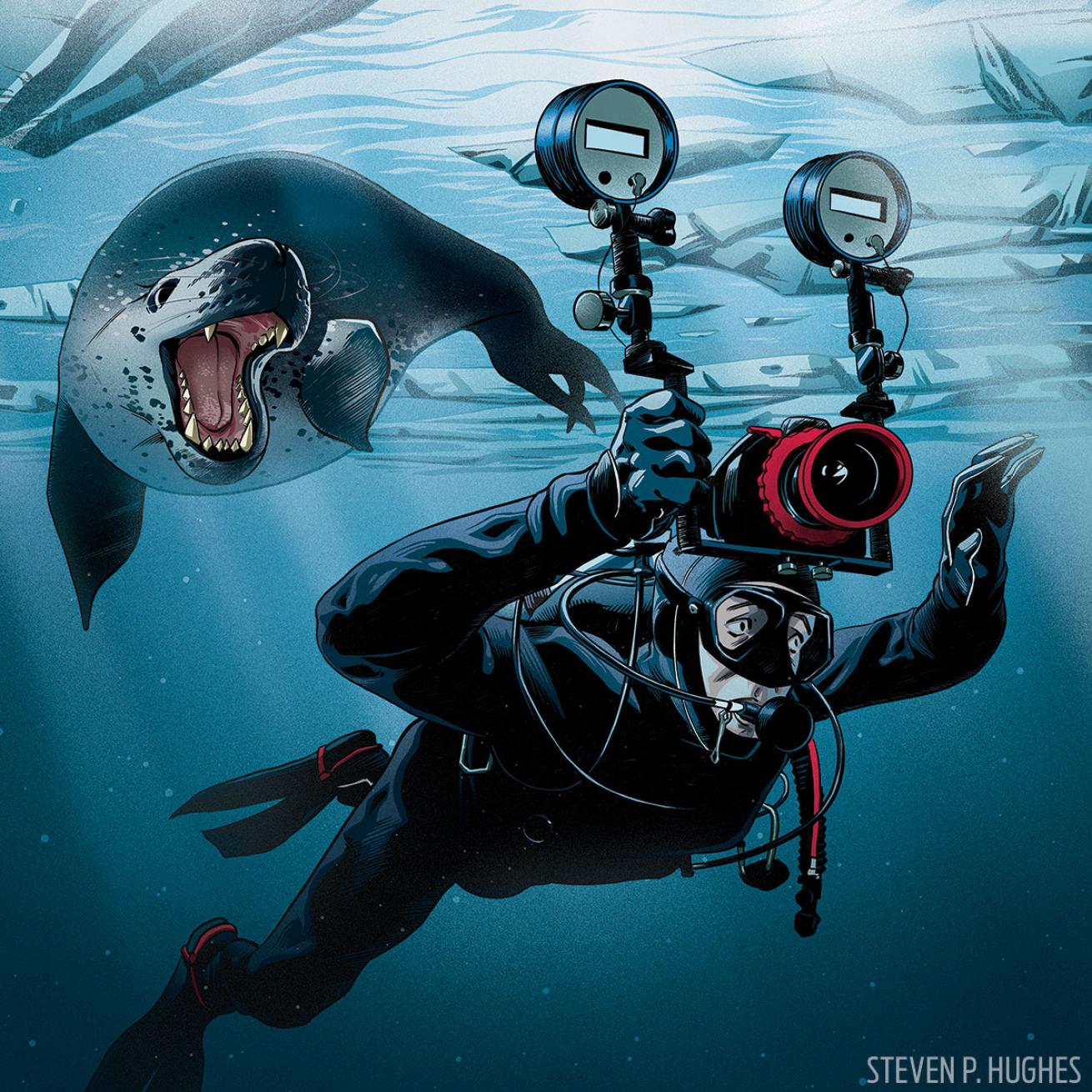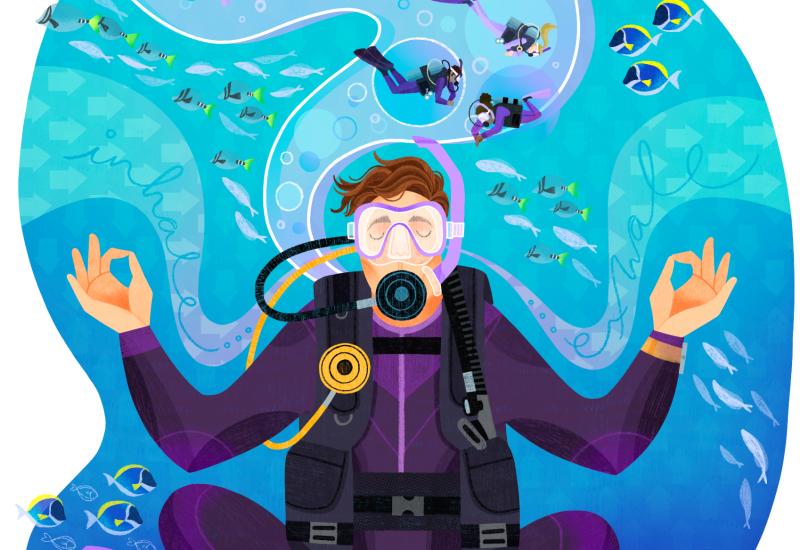What It's Like To Be Chased By A Leopard Seal

Steven P. Hughes
A Little Close For Comfort
An encounter with a large leopard seal leaves a diver a bit shaken.
In the first hour after the encounter, my friend and I drank two bottles of whiskey to calm our nerves.
More than a decade ago, I dropped into Antarctic waters with a leopard seal for the first time. I’d worked with walruses in Greenland before, and thought the seals would be similar. But that day, off Dream Island, I was struck by the enormity of the seal. I was terrified.
It approached with jaws open, and I flew out of the water like a rocket, back into the dinghy. She was after us, biting the Zodiac. She wasn’t cute like other seals — she looked evil. Watching her, I realized my expectations had been far off. I thought the animal would get nervous because of us; I was wrong. I thought if I felt threatened, I’d have time to get out of the water. Wrong again.
At the time, no one was diving with leopard seals, so I’d had no idea what to expect. I thought I’d try again, this time snorkeling, with a hand on the Zodiac so I could pull myself out quickly if things went awry. They did.
When I hopped in, the leopard seal was right in my face, again. We quit for the day, taking the aforementioned whiskey break. But this was my first job in Antarctica, and I didn’t want to go back to France feeling like a chicken. I slept on it.
In the morning, I figured: “They have quite nice hospitals at Palmer Station. Worst-case scenario, a broken drysuit or bitten arm.” I didn’t think it would kill me directly. If I suffered a bad bite, it would be better proof than my word that this was dangerous.
Day two, the seal came straight for me, but one thing was different: Her mouth was closed. She rolled her head back to study me. In that moment, I realized she was having fun, like when you scare somebody by saying, “Boo!” So I took my camera, held it straight at her face and lunged. She backed off for a bit. In that moment, I knew we’d be OK.










